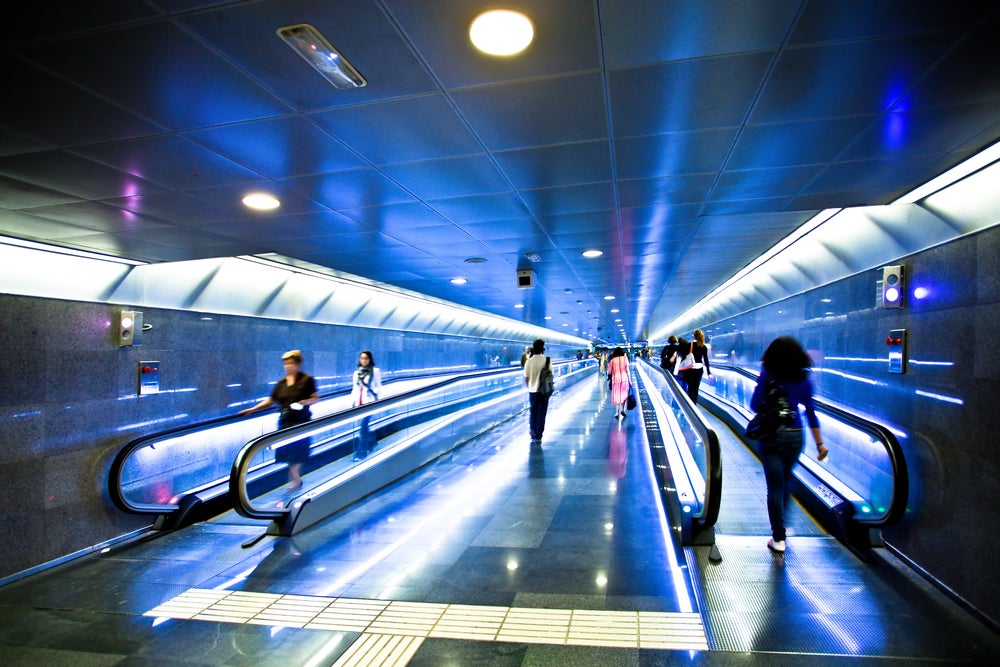
Big cities may rely on historical sights and antique treasures to draw in the tourists, but they can still benefit from infrastructure upgrades. Tourism will help to drive this evolution in the near future, and as one of the industries most rocked by Covid-19, the tourism sector is steadily getting smart and preparing for a world in which everyone is free to travel again.
According to a recent GlobalData report on smart tourism, a key driver behind this evolution will be the internet of things (IoT). In the words of the GlobalData researchers, the IoT will “accelerate recovery for travel and tourism companies” and those who are its leading adopters may “benefit from a quicker recovery as the world adapts to the ‘new normal.’”
In a GlobalData consumer survey from this year, 85% of consumers were still either “extremely”, “quite” or “slightly” concerned about their health due to the pandemic. IoT technology can help to ease such concerns for tourists, for example with wearable tech devices at airports and other transport terminals which ensure correct social distancing between travellers.
Who would buy a $100 Covid pass?
Bringing travel back to normal levels could also rely on the use of digital vaccine passports or Covid passes. Meant to ensure the safe recovery of international travel post-pandemic, these passports would provide proof of inoculation upon arrival. Perhaps unsurprisingly, China has already unveiled a digital Covid pass accessible on the WeChat instant-messaging app.
For those already double-jabbed against the Covid virus, this may all seem high-tech wishful thinking when compared to the humdrum reality of current proof of vaccination.
“Here in the US we have the Centers for Disease Control (CDC) and I have my CDC piece of paper with someone’s handwriting on it which shows that I received my vaccination,” says Rob Mungovan, Chief Commercial Officer (CCO) of biometric software brand Aware Inc. “Problem with that is it’s just a trust-based paper document. I can imagine when I might go to the UK in September I have to pull this thing out and show it to someone and they’ll say ‘Thank you, go through.’”

US Tariffs are shifting - will you react or anticipate?
Don’t let policy changes catch you off guard. Stay proactive with real-time data and expert analysis.
By GlobalDataFor more efficiency, Mungovan says a trusted document needs to be linked to the identity of the holder, in the same way facial scanners in airports can already link passport holders to the face in their document. In theory this shouldn’t be difficult, but a certain barrier stands in the way of progress.
“There needs to be a unique identifier associated with a database, and there needs to be infrastructure set up to enable that system to work. The government is going to have to implement it because commercial entities can’t make any money from it. There’s going to be no interest in doing it,” the CCO tells Verdict bluntly.
“If the governments or airlines don’t mandate it, then you might have to pay $100 to get a vaccine passport to get through the airports faster and quicker. That might drive (commercial interest) as well, but if I have a piece of paper that is just as valid as a digital passport on my phone, why am I going to spend $100?”
It’s likely we won’t get vaccine passports anytime soon when knowledgeable executives see no clear roadmap ahead for the solution. With a footprint ranging over 20 countries and working with over 80 government agencies, Aware’s industry perspective is hard to beat.
However Mungovan says this doesn’t mean biometrics in travel simply stops at electronic passport gates.
“We’re seeing more startups looking at implementing not a “ticketless experience” as there’s still the concept of a ticket, but something that binds your identity to a ticket.
“It eliminates scalping, it allows you to move through the gates quicker. Then, because you’ve ‘bought’ into the process and pre-registered, you’ll receive promotions on your phone during the event.
“There’s this concept of branding so the venue can ‘brand’ itself to you and you become sort of a trusted customer. There’s also this concept of upsell that occur through these processes, and that’s what we’re starting to see (in travel and events).”
Untact culture
If Covid passes become a reality, then a traveller’s journey may pose challenges for unprepared cities. Heading into restaurants, hotspots and accommodation, technology would be needed to read one’s passport. There’s also no 100% guarantee that vaccinated individuals are unable to transmit the virus, posing a headache for Destinations Management Organisations (DMOs) needing to control capacity to prevent contagion.
One simple solution for virus prevention is reducing contact. Travel companies across the tourism supply chain have already adapted to consumer preferences with no-touch tech and contactless technologies. It’s not unusual now for lodging hosts and airlines to offer individuals the chance to check-in digitally and control aspects of their journey and experience through an app on their smartphone.
Hilton’s “Connected Room” technology allows guests to use a hotel app to manage most things they would traditionally have to do manually in a guest room. From controlling the temperature and lighting to the TV and window coverings, the IoT tech allows guests to reduce the number of times they have to touch surfaces.
Almost half of all respondents in a 2020 GlobalData poll surveying tourism insiders declared they were investing in contactless/no-touch tech to reassure customers during the pandemic. South Korea has a term for this new way of doing things: “untact culture.” But while the country has some of the smartest and most modern cities in the world, the “untact tourism” being pushed by Korea’s tourist industry actually prioritises the kind of places tourists can enjoy while keeping their distance: large outdoor areas, mountain trails and rural spots that are far from the madding crowd.
This drive could see more tourism diverted from urban areas to countryside ones, thus solving for DMOs issues of capacity and contagion, all without the aid of any technology.
Smart cities make for smart tourism
Technology is still key to the future of both tourism and cities. The tourist experience is already being enriched by smart apps and personalised surroundings. The Museo dell’Opera del Duomo in Florence, Italy, for example, has a completely interactive exhibition accessible by phone.
When enter the museum using the free Wi-Fi, visitors download an app which features a virtual museum and lets them interact with real-world exhibits, thereby responding to the needs of both real-time and virtual visitors.
The relationship between tech and travel needs to become closer, and smart cities will definitely strengthen this bond. Closely aligned with IoT technology, smart cities improve the provision and development of urban services through tech. For example, smart cities can offer improved capacity planning and management through big data. By analysing data on where tourists visit and at what time, flow models can be made to predict the popularity of tourist spots and help DMOs prepare in advance.
London has hooked up this kind of data with that of its public transport system, offering tourists an official city guide app created in partnership with Transport for London. The app uses real-time data feeds to guide visitors around the city’s top tourist locations in the most efficient way possible.
This data can also be used for a macro kind of smart tourism, according to developments witnessed in GlobalData’s travel and tourism Patents Database. One specific patent application example, published in March 2021 and assigned to LG Electronics Inc, details a method for controlling an artificial device, and more particularly, a method for learning a user’s daily patterns using a deep neural network (DNN) model.
A travel service could then be provided based on analysis of a user’s daily patterns, incorporating aspects of IoT tech. The user’s device can then provide hyper-personalised travel information for their trip.
It’s clear that DMOs will need to collaborate with local stakeholders to reinvent and rebuild more responsible and effective tourism strategies post-pandemic. Tech and collaboration are the two key factors that will not just lead to more responsible and smart tourism management but also a safer and more personal experience for tourists overall.




